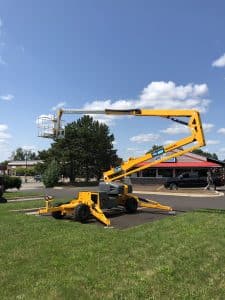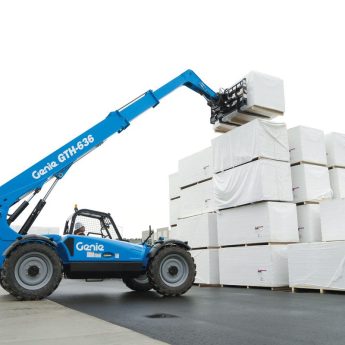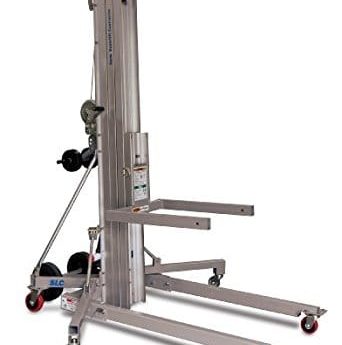Lift Rentals
Showing 13–14 of 14 results
What are the Different Types of Lift Rentals?
A machine or device with an aerial platform supported by a vehicle-mounted extension is referred to as a lift. These lifts are valuable tools for professionals and are used in construction, maintenance, and renovation applications.
A lift is a versatile and powerful tool that is used in construction. They can move materials, access hard-to-reach places, and much more.
Lifts come in different specifications, depending on the application. AC&E has aerial boom lifts, towable articulating lifts, scissor lifts, telehandlers and duck-hoist lifts for rent. Renting the right lift for you has never been easier.
How do I Choose the Right Lift Rental?
There are several factors to consider when selecting the right lift for a job. The lift height, overall dimensions, lift capacity, and the terrain the lift will be operating on will determine which lift is best suited to your needs.
- Lift Height – It’s important to make sure the lift has enough reach to access the work area.
- Overall Dimensions – Some lifts work well in tight spaces and others do not. Being aware of the size and footprint of the lift will dictate which lift is most appropriate.
- Lift Capacity – All lifts have a maximum carrying capacity. Making sure your lift can carry the weight of your material or workers is important.
- Terrain – Being aware of the job site’s terrain will affect which lift you choose as not all are suited to rough or uneven ground.
What Else Should I Consider When Renting a Lift?
Once you’ve decided which lift will best suit your needs, further considerations need to be accounted for when renting a lift. These are the personnel requirements, safety & training, storage, and the power specifications of the lift.
- Personnel Requirements – Most lifts are only able to hoist one person at a time. If your job requires multiple people to use the lift, this needs to be factored in when selecting the correct model.
- Safety & Training – Some lifts require trained operators to be used safely.
- Storage – Most lifts don’t take up much space, but some require larger areas to be stored safely.
- Power – Lifts can be powered by gasoline, electricity, batteries, diesel, or propane. Deciding which power option suits best is determined by the environment the lift will be operating in.




